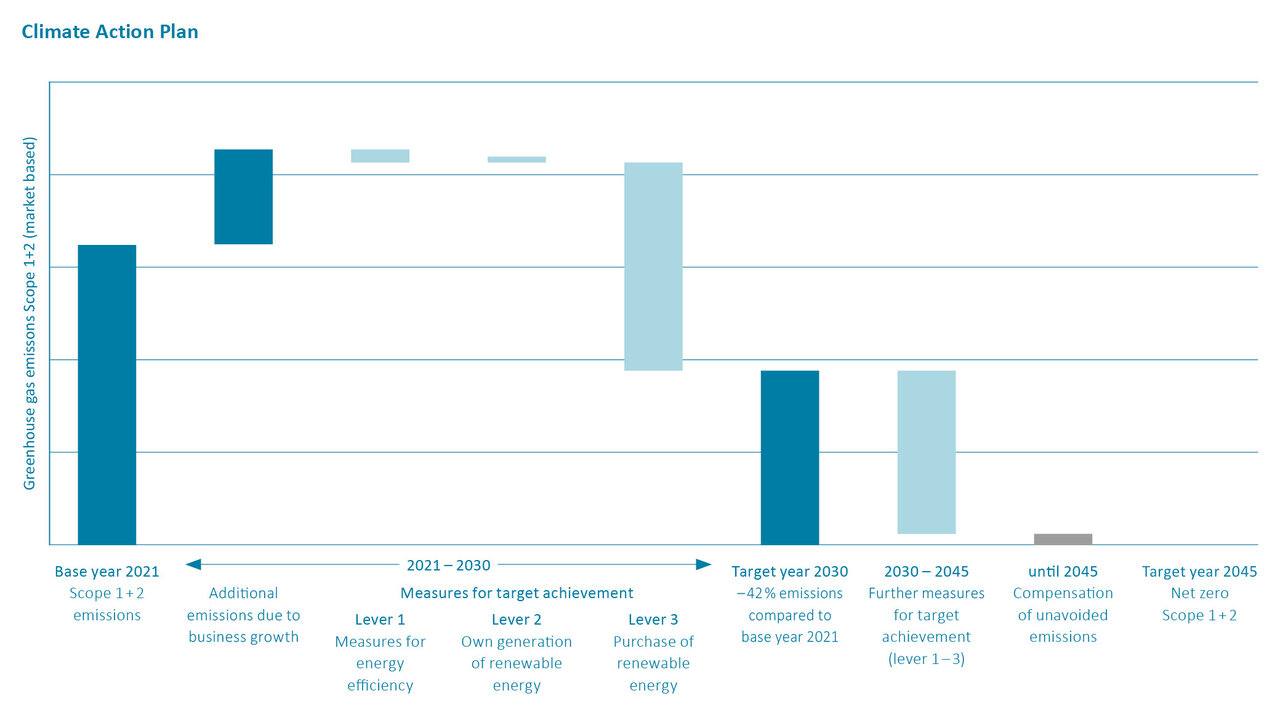Greenhouse gases at Siltronic
Siltronic's processes cause direct and indirect greenhouse gases. Emissions are also generated in the upstream and downstream value chain.
Scope 1: Direct greenhouse gas emissions at our locations are mainly caused by the stationary combustion of natural gas and diesel as well as the use of climate-relevant gases as coolants.
Scope 2: Indirect emissions are caused by the generation and provision of energy (electricity, heat) by our energy suppliers. The semiconductor industry is very energy-intensive. Therefore, indirect emissions are by far the main source of greenhouse gas emissions during production for Siltronic.
Scope 3: Emissions also occur in Siltronic's upstream and downstream value chain: at suppliers, during transportation of the products and during their use. Siltronic can only influence these emissions to a limited extent.
We record these emissions in our Group-wide CO2 balance sheet in accordance with the requirements of the Greenhouse Gas Protocol. We also report the calculated greenhouse gas emissions annually as part of the CDP assessment.
Our targets
We aim to reduce our greenhouse gas emissions caused directly (Scope 1) and indirectly through the purchase of energy (Scope 2) to zero by 2045 at the latest. Despite continued growth and the associated significant increase in energy consumption, these greenhouse gas emissions are to be reduced by an absolute 42% by 2030 compared to the base year 2021.
Scope 1+2 | ||
Anually | 2030 | 2045 |
| Reduction of CO2 intensity1 by Ø 5% p.a. | Absolute reduction of CO2 emissions by 42% | "Net zero"2 CO2 emissions |
| Base year 2021 | ||
(1) t CO2eq per EUR mn sales (2) Net zero: Greenhouse gas emissions released into the atmosphere equal the amount removed.
With these targets, we want to make a contribution to the climate agreement adopted in Paris in 2015 to limit global warming to a maximum of 1.5 degrees Celsius: The 1.5-degree target is the central reference point for Siltronic for the target years 2030 and 2045. To achieve this, the CO2 intensity, measured by CO2 emissions in relation to sales, should decrease by an average of at least 5 percent per year between 2021 and 2030.
Annual report
Audited information and key figures on sustainability at Siltronic can be found in our current annual report.
Related information
External websites
(1) Scope 1 and 2 | base year 2021
RE100: Focus on renewable energies
To underpin its commitment to renewable energy, Siltronic joined the RE100 initiative in November 2023. RE100 is a global corporate initiative that promotes the exclusive use of renewable energy. With its membership, Siltronic wants to contribute to removing one of the biggest obstacles to global decarbonization: the insufficient amount of green electricity available in many energy markets.
Climate protection in the supply chain
Siltronic is also committed to climate protection in the supply chain and the reduction of so-called Scope 3 emissions – i.e. greenhouse gas emissions that arise outside of Siltronic's direct sphere of influence. Siltronic's target here is for 80 percent of our key suppliers to have set themselves science-based climate targets by 2030 and 95 percent by 2045. By 2028 we want to reach 75 percent as the first milestone. We will report annually on the achievement of these targets. These targets cover more than 50 percent of our purchasing volume as well as 80 percent of the scope 3 emissions in the category of purchased goods and services. With this approach, we are focusing on the part of Scope 3 emissions that we can best influence.


